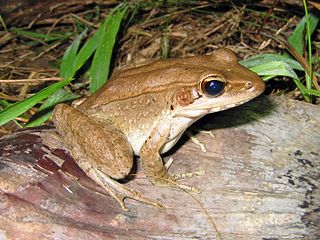Wood frog (Lithobates sylvaticus) is native to the North America. It has this amazing ability to ‘freeze’ itself in such a way that even its heart or brain stops during hibernation in winter. It is a highly migratory and forest-living frog. It is very difficult to spot these frogs because they blend in dead maple leaves.
The color of the wood frog varies from reddish-brown to pinkish-tan. Typically, they have dark brown
mask close to the eye. They have creamy-yellow bellies.
Wood frogs can grow up to a length range of 5.1 to 7 centimeters. Like in most frog species, female wood frogs are relatively larger.
 The lifespan of a wood frog can be up to 10 years.
The lifespan of a wood frog can be up to 10 years.
Breeding occurs from February till late March in forested pools.
A female wood frog deposits eggs in submerged vegetation. The tadpoles die if they are not developed into froglets while the ponds dry out. These frogs usually breed only once.
The wood frog is widely distributed across the United States. From east to west, these frogs are found from northern Georgia to Alaska. In Canada, its range extends from northeastern areas to its westernmost province called British Colombia.
Forests are the natural habitats of these frogs. They occupy short-lived freshwater swamps and vernal ponds. In summer, they migrate to upland habitats, moisture-laden forests and wetlands.
There is a wide variety of food on the menu of wood frogs. They usually prefer eating small ground-dwelling invertebrates. The tadpoles of these frogs eat algae and debris of plants. Besides, they also feed on the eggs of amphibians.





